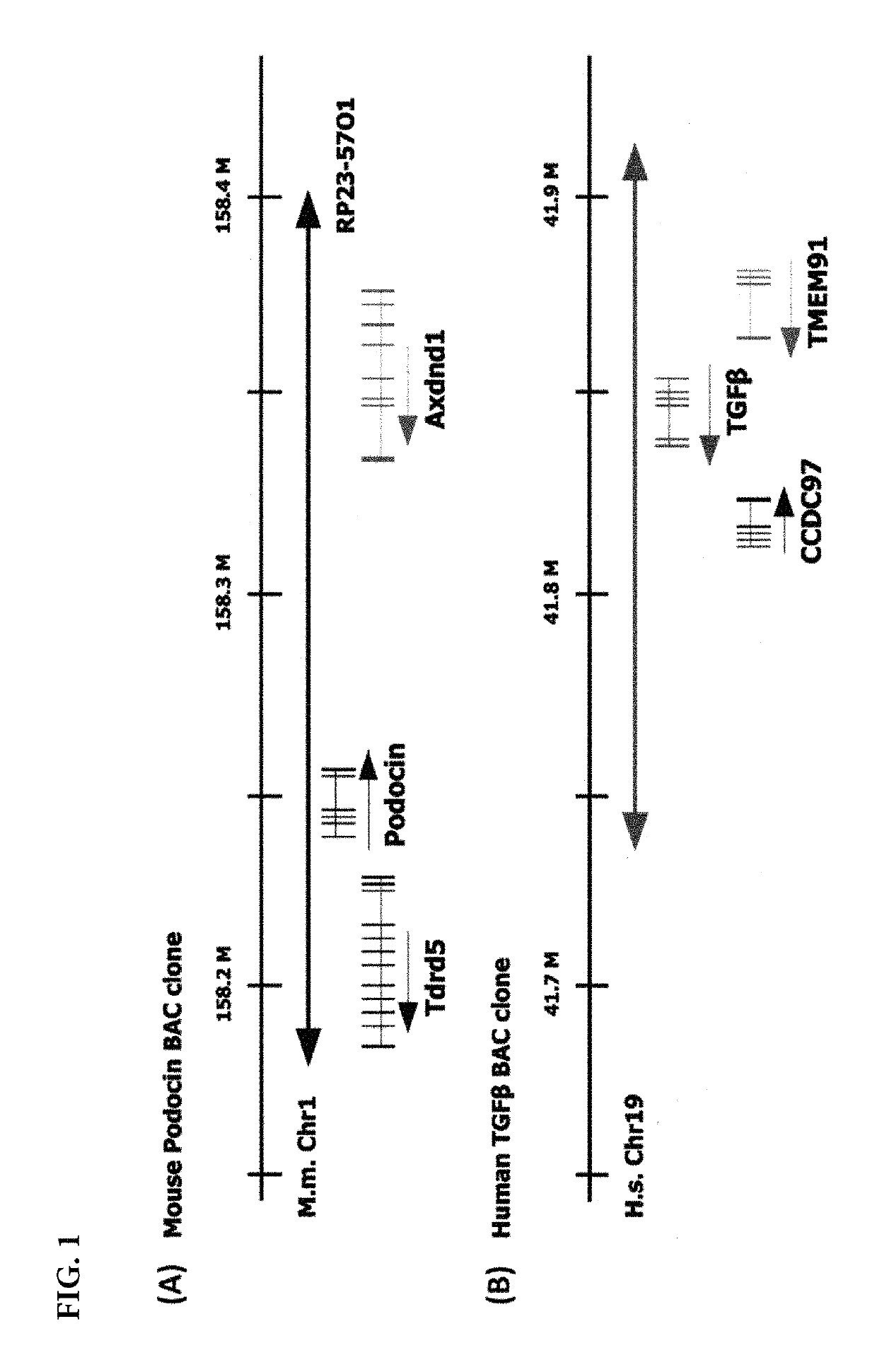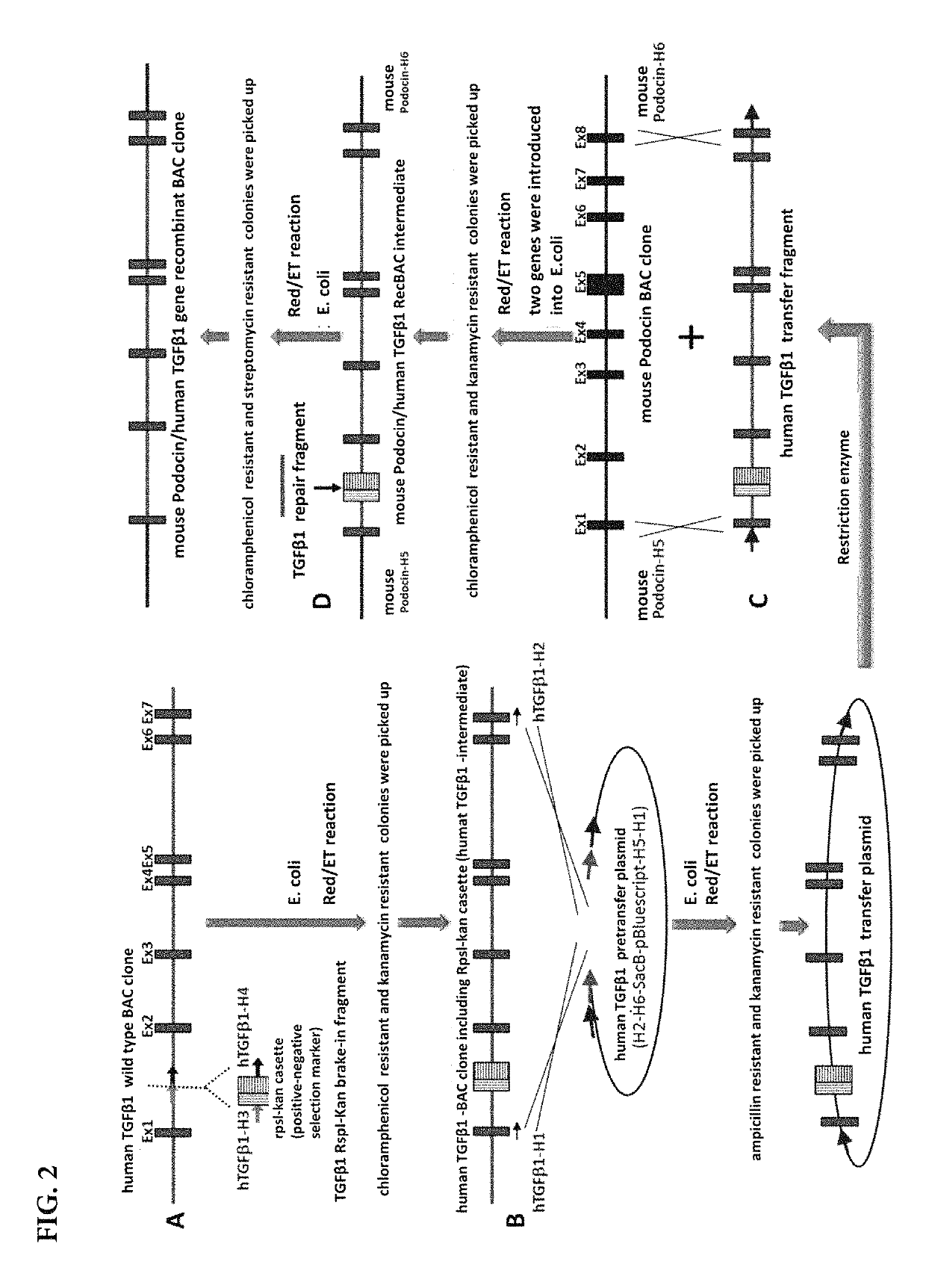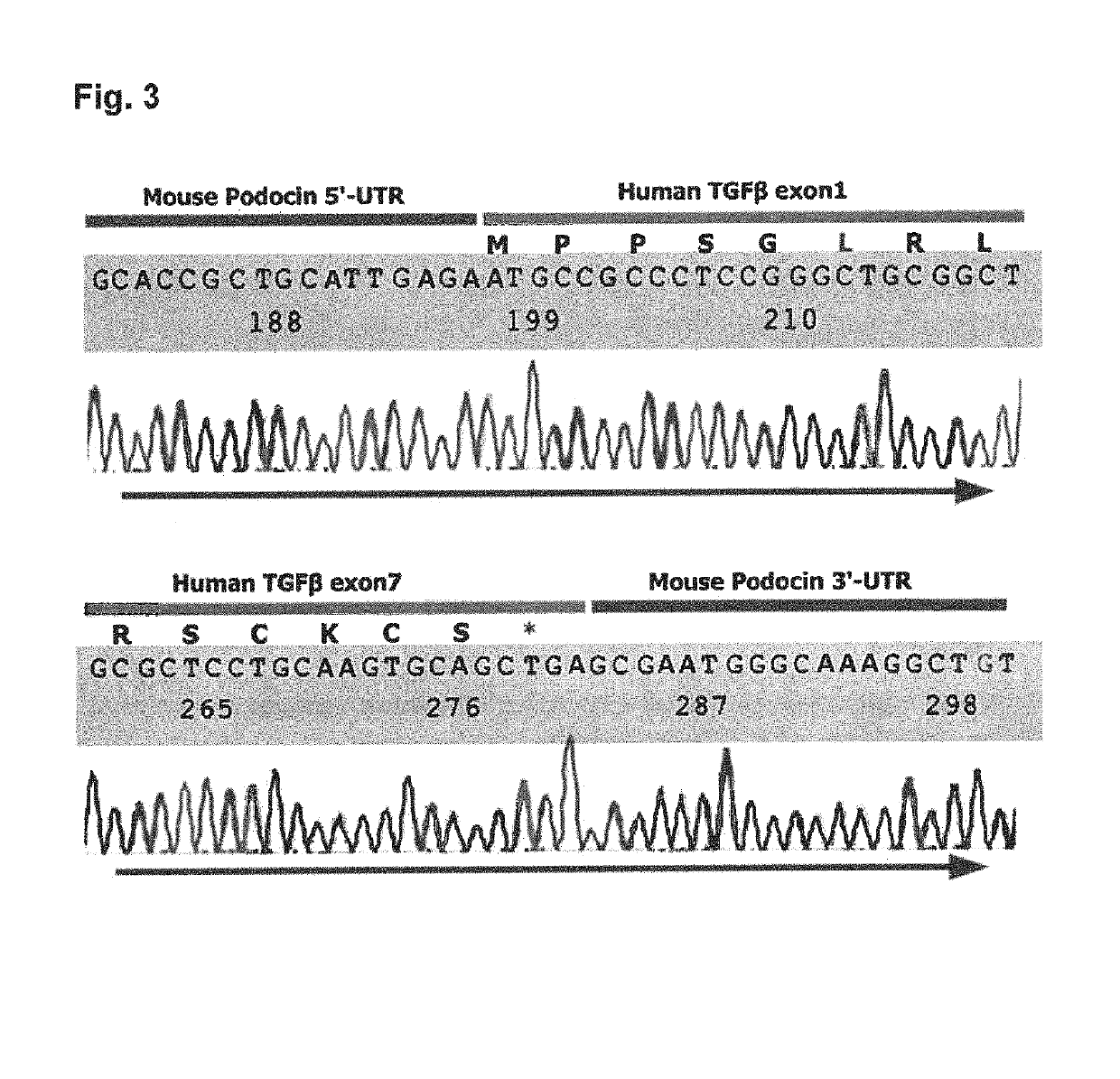Transgenic mouse expressing kidney-specific human TGF-beta1, and biomarker for tissue fibrosis mouse model
a mouse and human tgfbeta technology, applied in the field of transgenic mouse expressing kidney-specific human tgfbeta1, and biomarker for tissue fibrosis mouse model, can solve the problem that the tg mouse has not been obtained, and achieve the effect of easy evaluation and research on kidney-related diseases
- Summary
- Abstract
- Description
- Claims
- Application Information
AI Technical Summary
Benefits of technology
Problems solved by technology
Method used
Image
Examples
Embodiment Construction
[0056]Next, embodiments of the present invention will be explained with reference to the Figures and table. The technical scope of the present invention is not limited by these embodiments and can be carried out in various forms without changing the gist of the invention.
[0057]1. Data of Human TGF Beta 1 Gene and Mouse Podocin Gene, and Search for Genomic Clones
[0058]As a result of searching for mouse genomic DNA sequences based on the mouse Podocin cDNA sequence and NM_130456, mouse Podocin gene was present in a region of chromosome 1. When the cDNA sequence of the mouse Podocin gene and the mouse genomic sequence were aligned, it became clear that the coding region of the mouse Podocin gene includes eight exons in the genomic sequence in 17 kb region.
[0059]After searching for a BAC clone encoding mouse Podocin locus, the genomic DNA sequence of mouse Podocin locus was contained in RP23-5701. The BAC clone contained a 225 kb of chromosome 1 with mouse Podocin locus, 5′ genomic sequ...
PUM
| Property | Measurement | Unit |
|---|---|---|
| concentration | aaaaa | aaaaa |
| concentration | aaaaa | aaaaa |
| concentrations | aaaaa | aaaaa |
Abstract
Description
Claims
Application Information
 Login to View More
Login to View More - R&D
- Intellectual Property
- Life Sciences
- Materials
- Tech Scout
- Unparalleled Data Quality
- Higher Quality Content
- 60% Fewer Hallucinations
Browse by: Latest US Patents, China's latest patents, Technical Efficacy Thesaurus, Application Domain, Technology Topic, Popular Technical Reports.
© 2025 PatSnap. All rights reserved.Legal|Privacy policy|Modern Slavery Act Transparency Statement|Sitemap|About US| Contact US: help@patsnap.com



